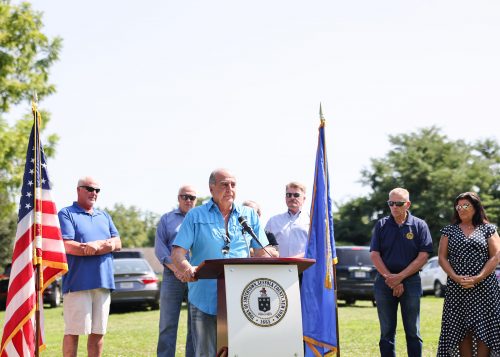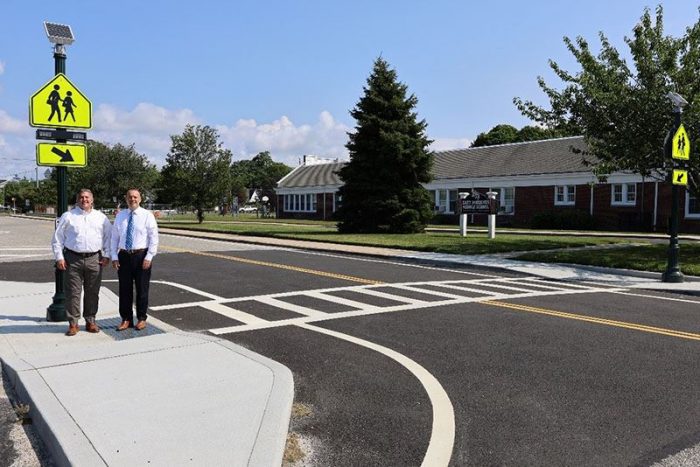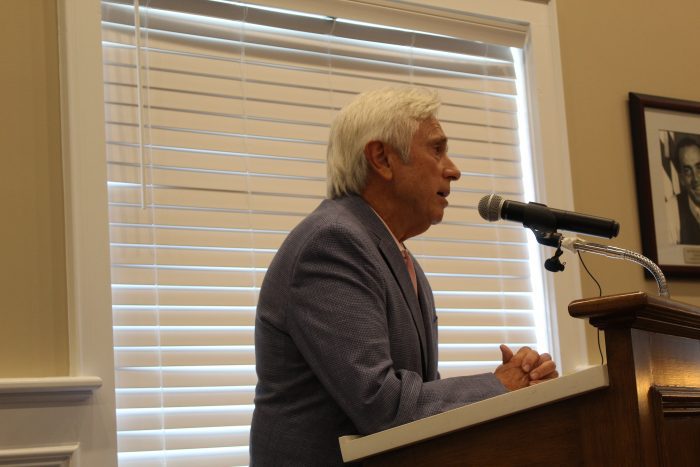Long Island’s two primary utility companies are in a tug-of-war over the region’s electric future.
A management contract between the New York State-owned Long Island Power Authority and the investor-owned utility company PSEG Long Island expires in December 2025, prompting uncertainty over the future management of the regional grid.
The Legislative Commission on the Future of the Long Island Power Authority is a bipartisan panel of state legislators from Long Island, formed in 2022 to make recommendations to the state Legislature for future reorganization.
Conflict erupted during the commission’s public hearing at the William H. Rogers Legislature Building in Hauppauge Tuesday, Sept. 12, during which LIPA and PSEGLI reps offered disparate visions.
Municipalization proposal
The legislative commission is considering implementing a full-scale municipalization of utility power on Long Island, empowering LIPA to provide electric service independently without contracting with a third-party vendor, such as PSEGLI.
During the hearing, Tom Falcone, LIPA’s CEO, addressed the commission, noting the complications of overlapping responsibilities between the separate management hierarchies of LIPA and PSEGLI.
“There is not one best governance model … but there are governance models that could result in duplicative roles and responsibilities or unnecessary conflict,” he said. “Multiple overlapping bodies with similar responsibilities can frustrate customers with a lack of clarity and accountability, much like our hybrid management structure between LIPA and PSEG.”
Falcone advised that consolidating management positions within LIPA would enable the state to reduce total management personnel by roughly 13 senior positions.
Falcone added that municipalization would deliver greater accountability from the electric service provider, empowering the LIPA Board to replace senior officials who fail to perform.
“The board can fire me,” the LIPA CEO indicated. “I can’t fire PSEG,” adding, “If PSEG is not delivering, we litigate and we hold back money.”
Checks and balances
But PSEGLI refused to go down without a fight, countering Falcone’s assessment of the existing dynamic between the two utilities.
Christopher Hahn, vice president of external affairs at PSEGLI, advocated for the existing public-private partnership between LIPA and PSEGLI.
“There’s real, built-in accountability to the public-private partnership,” he said. “It is something that has been working for Long Islanders and will continue to work for Long Islanders.”
Hahn maintained that the public-private partnership gives Long Island “the best of both worlds,” maximizing the potential for each utility company while creating checks and balances between LIPA and PSEGLI.
“Having a municipally owned grid gives us the benefit of that low [interest] bonding and, of course, access to [Federal Emergency Management Agency] funds in the event that we have storms,” he said. “And then having the private company and being held accountable.”
He added that accountability for PSEGLI is built into its contract structure, which is only 40% guaranteed. He maintained that PSEGLI continues to rank highly in reliability and customer satisfaction.
“Those are things that came here because of the public-private partnership, because of the push-pull between PSEG and LIPA,” he said.
Conversations over the restructuring of LIPA will continue this week as the commission is scheduled to meet again at 10 a.m. Thursday, Sept. 14, at the Nassau County Legislature in Mineola. To livestream the meeting, visit totalwebcasting.com/live/nylipa. Register on-site to testify. Written testimony can be submitted at nylipa.gov/public-input. Other September meetings are due to be held at The Rockaways, Southampton and Farmingdale State College.













 “Before we can ask for bail, you would have to have enough fentanyl to kill 134,000 people,” he said. “We shouldn’t have to wait for someone to die before we can take them off the street,” adding, “That is unconscionable in the face of an epidemic.”
“Before we can ask for bail, you would have to have enough fentanyl to kill 134,000 people,” he said. “We shouldn’t have to wait for someone to die before we can take them off the street,” adding, “That is unconscionable in the face of an epidemic.”



